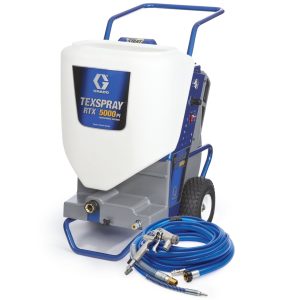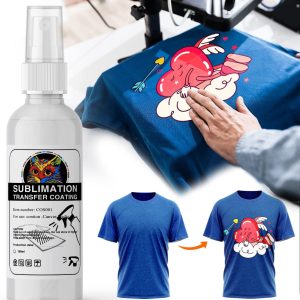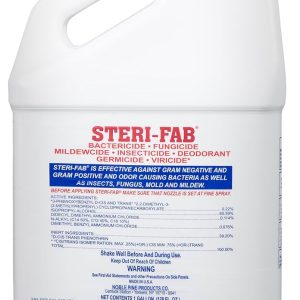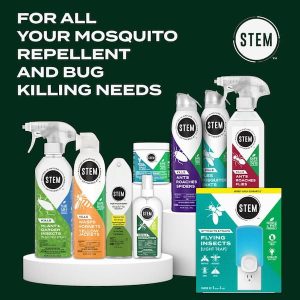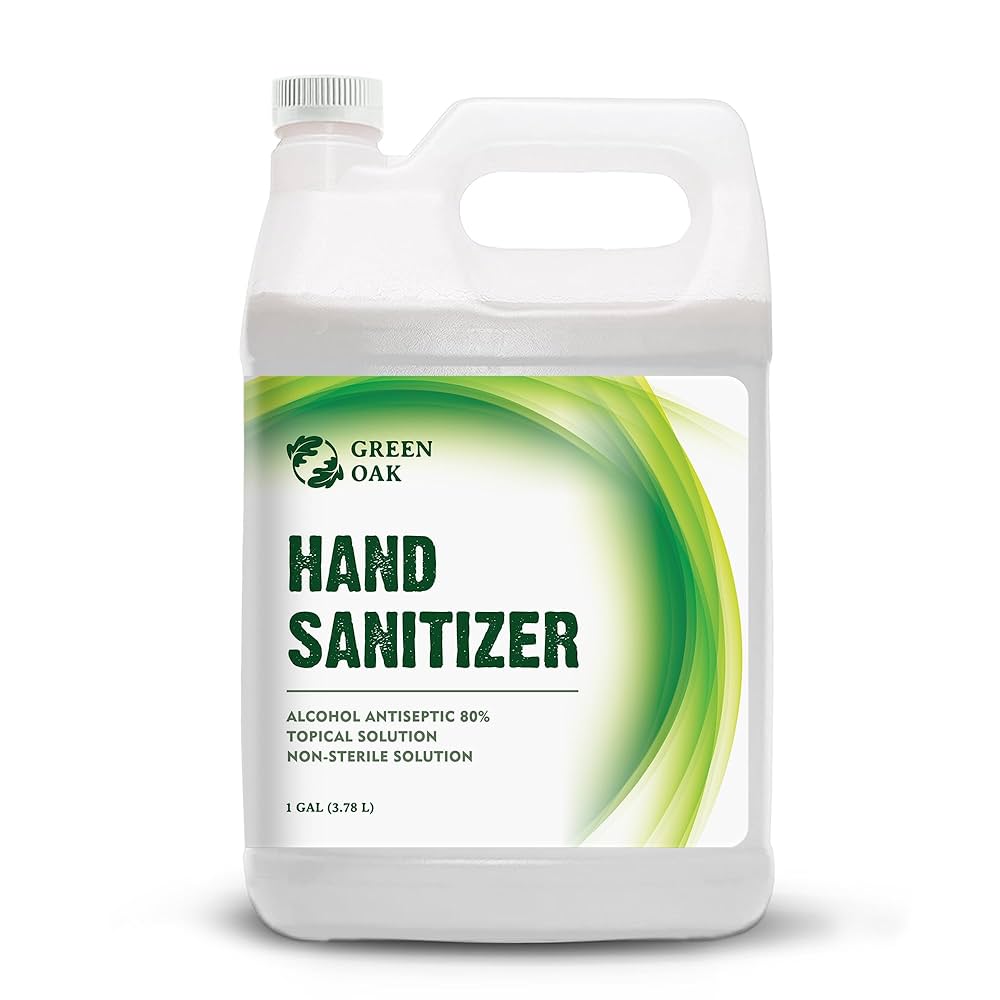
Spray hand sanitizer refill systems have become essential infrastructure in offices, schools, hospitals, and homes worldwide. The convenience of touchless dispensers combined with cost-effective refill solutions makes spray hand sanitizer refill options increasingly popular among facility managers and homeowners seeking efficient hygiene maintenance.
Unlike traditional pump dispensers, spray mechanisms deliver precise amounts of sanitizer while minimizing waste and contamination risks. The aerosol delivery system ensures even coverage across hands without requiring direct contact with dispensing equipment. This technology has revolutionized how we approach hand hygiene in high-traffic environments where contamination prevention remains paramount.
Modern spray hand sanitizer refill cartridges contain advanced formulations meeting CDC and WHO guidelines for alcohol-based sanitizers. These refills typically contain 70% ethyl alcohol or higher concentrations, ensuring effective elimination of bacteria, viruses, and other pathogens. The spray delivery method also reduces product waste by up to 40% compared to traditional liquid dispensers, making refill systems both economically and environmentally beneficial.
Understanding Spray Hand Sanitizer Refill Technology
The mechanics behind spray hand sanitizer refill systems involve sophisticated dispensing technology that converts liquid sanitizer into fine mist particles. This atomization process creates optimal coverage while using minimal product per application. Advanced sensor technology detects hand presence and delivers measured doses automatically, preventing overuse and extending refill longevity.
Professional-grade spray dispensers utilize pressure-assisted delivery systems that maintain consistent spray patterns regardless of refill levels. These systems feature anti-clog mechanisms that prevent nozzle blockages common in inferior products. The pressurized cartridge design ensures reliable performance even in high-usage environments where dispensers activate hundreds of times daily.
Quality spray hand sanitizer refill cartridges incorporate multiple safety features including leak-proof seals, tamper-evident closures, and expiration date indicators. These features ensure product integrity throughout the refill’s lifespan while providing clear usage guidelines for facility managers. Professional refills also include detailed ingredient listings and safety data sheets required for institutional use.
The chemical composition of spray refills differs significantly from gel-based alternatives. Spray formulations contain additional surfactants and emulsifiers that maintain proper atomization characteristics while preserving antimicrobial effectiveness. These additives prevent ingredient separation during storage and ensure consistent product performance across varying environmental conditions.
Types of Spray Hand Sanitizer Refill Systems Available
Aerosol Cartridge Refill Systems
Aerosol-based spray hand sanitizer refill cartridges represent the most common touchless dispensing solution in commercial environments. These pressurized containers deliver consistent spray patterns throughout their lifespan, utilizing propellant gases that don’t compromise sanitizer effectiveness. Aerosol systems typically provide 500-800 activations per cartridge depending on spray volume settings.
Professional aerosol refills feature aluminum cartridges with specialized valve systems designed for high-frequency use. These valves incorporate precision metering mechanisms that deliver exact doses ranging from 0.5ml to 1.2ml per activation. The aluminum construction provides superior barrier properties, preventing contamination and maintaining product sterility throughout the cartridge’s operational life.
Premium aerosol spray hand sanitizer refill options include fragrance-free formulations specifically designed for healthcare environments where scent sensitivity concerns exist. These medical-grade refills undergo additional quality testing to ensure compatibility with sensitive skin types and compliance with hospital infection control protocols.
Pump-Assisted Spray Refill Systems
Pump-assisted spray mechanisms offer alternative delivery methods for spray hand sanitizer refill applications where aerosol systems aren’t suitable. These systems utilize manual or automatic pumps to pressurize liquid sanitizer, creating spray patterns comparable to aerosol alternatives without requiring propellant gases.
Battery-operated pump systems provide consistent spray performance regardless of environmental temperature fluctuations that can affect aerosol pressure. These systems accommodate larger refill volumes, typically ranging from 500ml to 1000ml capacities, making them ideal for high-traffic locations requiring frequent sanitizing.
Manual pump-assisted spray hand sanitizer refill systems offer completely mechanical operation without electrical components. These robust systems function reliably in outdoor environments, construction sites, or locations where power availability remains inconsistent. The mechanical simplicity reduces maintenance requirements while providing dependable sanitizer delivery.
Choosing the Right Spray Hand Sanitizer Refill for Your Needs
Capacity Considerations for Different Environments
Selecting appropriate spray hand sanitizer refill capacity depends heavily on usage patterns and location characteristics. High-traffic areas such as hospital entrances, school cafeterias, or office lobbies require larger capacity refills to minimize replacement frequency and maintenance costs.
Usage Pattern Analysis Table:
| Environment Type | Daily Activations | Recommended Refill Size | Replacement Frequency |
|---|---|---|---|
| Small Office | 20-50 | 300ml | 2-3 weeks |
| School Classroom | 100-200 | 500ml | 1-2 weeks |
| Hospital Ward | 300-500 | 800ml | 3-5 days |
| Shopping Mall | 500+ | 1000ml | 2-3 days |
Commercial facilities should calculate expected usage based on occupancy rates and frequency of hand sanitizing behavior. Studies indicate average individuals sanitize hands 8-12 times daily in institutional settings, with each activation consuming approximately 1ml of product. These calculations help determine optimal spray hand sanitizer refill inventory levels and replacement schedules.
Alcohol Content and Effectiveness Standards
Effective spray hand sanitizer refill formulations must contain sufficient alcohol concentrations to eliminate target pathogens while remaining safe for frequent use. The CDC recommends alcohol-based sanitizers contain 70-95% ethyl alcohol for maximum antimicrobial effectiveness against viruses, bacteria, and fungi.
Higher alcohol concentrations don’t necessarily provide superior pathogen elimination, as extremely high concentrations can evaporate too quickly to maintain adequate contact time. Optimal formulations balance alcohol concentration with evaporation rates to ensure sufficient dwell time for pathogen destruction while providing comfortable user experience.
Premium spray hand sanitizer refill products incorporate additional antimicrobial agents such as benzalkonium chloride or hydrogen peroxide to enhance effectiveness against specific pathogen types. These combination formulations provide broader spectrum protection while maintaining skin compatibility through careful pH balancing and moisturizing additives.
Quality refill manufacturers provide detailed efficacy testing data demonstrating pathogen elimination rates under controlled conditions. These studies typically show 99.9% effectiveness against common bacteria and enveloped viruses when proper application techniques are followed. Independent laboratory testing validates these claims through standardized protocols recognized by regulatory agencies.
Installation and Maintenance of Spray Hand Sanitizer Refill Systems
Proper Installation Procedures
Installing spray hand sanitizer refill dispensers requires careful consideration of mounting height, accessibility requirements, and electrical connections for automatic systems. Standard mounting height ranges from 42-48 inches from floor level to accommodate wheelchair accessibility while remaining convenient for average-height users.
Wall-mounted spray dispensers need secure anchoring to support refill weight and frequent usage forces. Professional installation utilizes heavy-duty mounting brackets with multiple anchor points to prevent loosening or displacement. Proper anchoring becomes especially critical in high-traffic areas where dispensers experience frequent activation and potential impact.
Electrical connections for automatic spray hand sanitizer refill systems require compliance with local building codes and safety regulations. Professional electricians should handle wiring installations, especially in healthcare facilities where medical equipment compatibility considerations apply. Battery-operated alternatives eliminate electrical requirements while providing reliable automated operation.
Routine Maintenance and Refill Procedures
Regular maintenance ensures spray hand sanitizer refill systems continue operating efficiently while providing consistent product delivery. Maintenance schedules should include weekly cleaning of sensor areas, monthly testing of activation mechanisms, and immediate replacement of malfunctioning components.
Monthly Maintenance Checklist:
- Clean sensor windows with appropriate disinfectants
- Test activation sensitivity and adjust if necessary
- Inspect mounting hardware for looseness or damage
- Check battery levels in automatic systems
- Verify spray pattern consistency and adjust nozzles
- Document refill usage rates for inventory planning
Professional maintenance services offer comprehensive spray hand sanitizer refill system care including preventive maintenance, emergency repairs, and refill supply management. These services prove especially valuable for large facilities managing multiple dispenser locations where in-house maintenance becomes impractical.
Cost Analysis and Budgeting for Spray Hand Sanitizer Refills
Initial Investment vs. Long-term Operating Costs
The financial benefits of spray hand sanitizer refill systems become apparent through reduced product waste, lower maintenance requirements, and improved user satisfaction. Initial equipment costs typically range from $50-200 per dispenser depending on features and capacity, while refill costs average $8-15 per cartridge.
Cost-per-use calculations reveal significant savings compared to individual sanitizer bottles or pump dispensers. Professional spray hand sanitizer refill systems deliver approximately 500-800 doses per cartridge, resulting in per-use costs ranging from $0.01-0.03. This efficiency makes spray systems particularly attractive for high-volume applications.
Annual Cost Comparison Table:
| System Type | Initial Cost | Annual Refill Cost | Maintenance Cost | Total Annual Cost |
|---|---|---|---|---|
| Spray Refill | $150 | $480 | $120 | $600 |
| Pump Bottles | $75 | $720 | $200 | $920 |
| Individual Bottles | $25 | $960 | $50 | $1,010 |
Bulk Purchasing Advantages
Volume purchasing of spray hand sanitizer refill cartridges provides substantial cost savings for organizations managing multiple locations or high-usage environments. Bulk pricing typically offers 15-25% discounts for orders exceeding 100 cartridges, with additional savings available for annual supply contracts.
Inventory management benefits accompany bulk purchasing, including guaranteed supply availability during shortage periods and reduced administrative costs associated with frequent ordering. Many suppliers offer automatic delivery programs that monitor usage patterns and schedule refill deliveries before supplies are exhausted.
Corporate purchasing agreements for spray hand sanitizer refill supplies often include additional services such as dispenser maintenance, usage reporting, and emergency supply provisions. These comprehensive agreements simplify facility management while ensuring consistent sanitizer availability across all locations.
Environmental Impact and Sustainability Considerations
Eco-Friendly Refill Options
Environmentally conscious organizations increasingly seek spray hand sanitizer refill options that minimize environmental impact while maintaining effectiveness standards. Eco-friendly refills utilize recyclable aluminum cartridges, biodegradable propellants, and sustainably sourced alcohol derived from renewable feedstocks.
Green certification programs evaluate spray hand sanitizer refill products across multiple environmental criteria including packaging materials, manufacturing processes, and end-of-life disposal options. Products meeting certification standards typically display third-party verification logos that help purchasers identify genuinely sustainable options.
Refillable cartridge systems represent the most environmentally beneficial spray hand sanitizer refill approach, allowing organizations to purchase sanitizer in bulk containers and refill cartridges on-site. This approach eliminates single-use packaging while reducing transportation-related carbon emissions associated with frequent deliveries.
Waste Reduction Strategies
Implementing comprehensive waste reduction strategies maximizes the environmental benefits of spray hand sanitizer refill systems. Proper cartridge recycling programs ensure aluminum components return to manufacturing streams while preventing landfill accumulation. Many manufacturers operate take-back programs accepting used cartridges for proper recycling.
Usage optimization through proper dispenser calibration reduces sanitizer waste while maintaining hygiene effectiveness. Adjusting spray volume settings based on actual usage patterns can reduce consumption by 20-30% without compromising sanitation goals. Regular monitoring and adjustment ensure optimal efficiency throughout the system’s operational life.
Training programs educate users about proper spray hand sanitizer refill system operation, reducing waste from excessive activation or improper hand positioning. Simple user education initiatives can significantly improve system efficiency while reducing overall environmental impact.
Health and Safety Considerations for Spray Hand Sanitizer Refills
Skin Compatibility and Allergenic Concerns
Professional spray hand sanitizer refill formulations undergo extensive dermatological testing to ensure skin compatibility during frequent use. Hypoallergenic formulations exclude common irritants such as fragrances, dyes, and preservatives that may cause adverse reactions in sensitive individuals.
Moisturizing additives in premium refill formulations help prevent skin dryness and cracking associated with frequent alcohol exposure. Ingredients such as aloe vera, vitamin E, and glycerin provide protective benefits while maintaining antimicrobial effectiveness. These additives prove especially important in healthcare environments where staff sanitize hands dozens of times daily.
Organizations serving diverse populations should consider fragrance-free spray hand sanitizer refill options to accommodate individuals with chemical sensitivities or respiratory conditions. Fragrance-free formulations eliminate potential triggers while providing equivalent pathogen elimination effectiveness.
Storage and Handling Requirements
Proper storage of spray hand sanitizer refill cartridges ensures product safety and effectiveness throughout their shelf life. Storage areas should maintain temperatures between 59-77°F (15-25°C) while avoiding direct sunlight exposure that can degrade alcohol content and compromise antimicrobial properties.
Fire safety considerations require special attention when storing alcohol-based sanitizer refills in large quantities. Storage areas need adequate ventilation, appropriate fire suppression systems, and compliance with local fire codes regarding flammable liquid storage limits. Professional consultation helps ensure proper safety measures are implemented.
Handling procedures for spray hand sanitizer refill installation should include appropriate personal protective equipment to prevent skin contact with concentrated sanitizer formulations. Installation personnel should wear nitrile gloves and safety glasses while following manufacturer-specified procedures for cartridge replacement and system maintenance.
Troubleshooting Common Spray Hand Sanitizer Refill Issues
Dispensing Problems and Solutions
Inconsistent spray patterns represent the most common issue with spray hand sanitizer refill systems, typically resulting from nozzle clogs or improper cartridge installation. Regular cleaning with compressed air and appropriate solvents prevents buildup that restricts spray flow. Professional-grade systems include self-cleaning mechanisms that minimize clog formation.
Sensor malfunction in automatic dispensers can result from contamination of detection windows or electrical interference from nearby equipment. Weekly cleaning of sensor areas with alcohol-based cleaners maintains optimal sensitivity. Adjusting sensitivity settings may resolve activation issues without requiring component replacement.
Low spray volume often indicates declining cartridge pressure or internal valve problems. Replacing the spray hand sanitizer refill cartridge typically resolves volume issues, though persistent problems may require dispenser servicing. Professional maintenance can identify underlying mechanical issues before they cause complete system failure.
Maintenance Scheduling and Record Keeping
Systematic maintenance scheduling prevents most spray hand sanitizer refill system problems while extending equipment life. Monthly inspection schedules should document activation counts, refill replacement dates, and any observed performance issues. This documentation helps identify patterns that may indicate needed adjustments or component replacements.
Digital monitoring systems available with advanced dispensers provide automated tracking of usage patterns, refill levels, and maintenance requirements. These systems generate alerts when refills need replacement or maintenance activities are due, ensuring consistent sanitizer availability without manual monitoring.
Professional maintenance contracts for spray hand sanitizer refill systems typically include emergency service provisions, preventive maintenance schedules, and detailed performance reporting. These services prove especially valuable for healthcare facilities where sanitizer availability represents a critical infection control requirement.
Frequently Asked Questions About Spray Hand Sanitizer Refill
How long does a spray hand sanitizer refill cartridge typically last?
A standard spray hand sanitizer refill cartridge provides approximately 500-800 activations depending on dispenser settings and cartridge capacity. In moderate-use environments, this typically translates to 2-4 weeks of service, while high-traffic areas may require weekly replacement.
Can I refill empty spray hand sanitizer cartridges myself?
Most commercial spray hand sanitizer refill cartridges are designed for single use and cannot be safely refilled. Attempting to refill pressurized cartridges poses safety risks and may void warranty coverage. Some systems offer refillable options specifically designed for on-site filling.
What alcohol percentage should I look for in spray hand sanitizer refills?
Effective spray hand sanitizer refill products should contain 70-95% ethyl alcohol or 70% isopropyl alcohol to meet CDC effectiveness guidelines. Higher concentrations don’t necessarily provide better protection and may cause increased skin irritation.
Are spray hand sanitizer refills safe for children to use?
Spray hand sanitizer refill systems designed for child use should include safety features such as reduced spray volume and child-resistant activation mechanisms. Adult supervision remains recommended for children under 6 years old to ensure proper usage and prevent ingestion.
How should I dispose of empty spray hand sanitizer refill cartridges?
Empty spray hand sanitizer refill cartridges typically require special disposal as hazardous waste due to residual alcohol content and pressurized components. Many manufacturers offer take-back programs, or contact local waste management authorities for proper disposal procedures.
Do spray hand sanitizer refills work in cold weather conditions?
Most spray hand sanitizer refill cartridges function normally in temperatures above 32°F (0°C). Extremely cold conditions may affect spray pressure and pattern consistency. Indoor installation or heated enclosures may be necessary for reliable operation in harsh climates.
Ready to upgrade your facility’s hand hygiene system? Explore our comprehensive selection of spray hand sanitizer refill solutions designed for every environment and budget. Contact our specialists today for personalized recommendations and bulk pricing options.
For additional facility maintenance solutions, including spray on roofing applications, visit our complete product catalog.
Citation: Centers for Disease Control and Prevention. (2023). Hand Hygiene Guidelines for Healthcare Settings. Atlanta: CDC Press.
